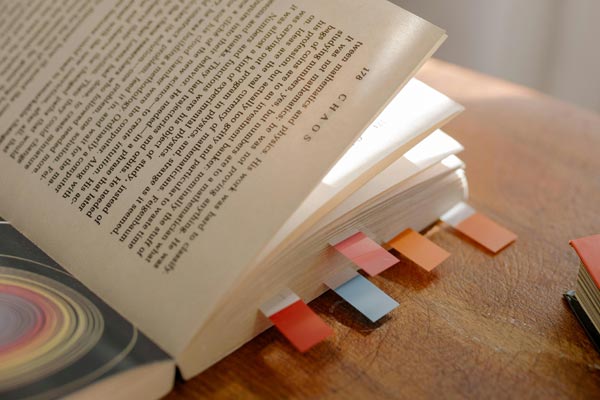Unit 3 My School
【重点短语】
1. in front of 在……前面
2. next to 紧邻;在……近旁
3. across from 在对面
4. a teacher ' s desk 讲台
5. put up notices 张贴通知
6. in the desk drawers 在课桌抽屉里
7. at the back ( of )在(……)的后面
8. on the wall 在墙上
9. in the corner 在角落
10. do exercises 做体操
11. raise the flag 升旗
12. similar to 类似的;相像的
13. between ... and ...在……之间
14. wake up 醒来
15.get up 起床
16.fly kite 放风筝
17. ride bike 骑自行车
18.wait a minute 等一下
19.on your head 在我的床上
【重点句型】
1. The teachers ' building is across from the school hall .
教师楼在学校礼堂的对面。
2. There are 40 student desks in the room.
在房间里有40张学生桌。
3. In his classroom , the smart whiteboard is next to the blackboard.
在他的教室里,智能白板在黑板旁边。
4. All the students go there and do exercises together in the morning.
在早上,所有的学生都去那里一起做体操。
5. Every Monday we raise the flag there.
每个周一我们都在那里升旗。
6. It ' s a special way to start the week.
这是开始一周的一种特别方式。
7. It ' s my favorite place because there are many kinds of food .
这是我最喜欢的地方,因为那里有各种食物。
8.What do you have in your schoolbag?你的书包里有什么?
I have a cap.我有一顶帽子。
9.Is it in your schoolbag? 它在你的书包里吗?
No,it isn't. 不,它不在。
【语法知识】
there be句型
1、定义与结构
there be句型是英语中用于表示“某地有(存在)某人或某物”的常用句型。其基本结构为“There is/are + 某人/某物 + 地点状语”。这个句型强调的是存在关系,即某物或某人在某地的存在状态。
1)肯定句
在肯定句中,我们根据主语的单复数来选择is或are,其基本结构是:There is/are + 某人/某物 + 地点状语
例句:There is a beautiful garden behind our house. 我们家后面有一个漂亮的花园。
2)否定句
否定句结构为There isn't/aren't+ 某人/某物 + 地点状语。
例句:There isn't a single person in the room. 房间里没有一个人。
3)疑问句
疑问句是将is或are提前到句首,并在句尾加上问号,即Is/Are + 某人/某物 + 地点状语?回答时,肯定用Yes, there is/are;否定用No, there isn't/aren't。
例句:Is there a library in this school? 这所学校有图书馆吗?
肯定回答:Yes, there is. 是的,有。
否定回答:No, there isn't. 不,没有。
3、there be句型与have/has的区别
there be句型主要用于表示“某地有(存在)某人或某物”。它强调的是物体的存在或位置。而have/has则用于表示“某人拥有某物”。它强调的是物体与人的拥有关系。
例句:
There is a beautiful park near my house. 我家附近有一个漂亮的公园。
She has a cute dog. 她有一只可爱的小狗。
4、there be句型的主谓一致
在使用There be句型时,我们需要注意主谓一致的原则,即be动词的形式要与其后的主语保持一致。
1)单复数判断
主语为可数名词单数或不可数名词时,be动词用is。主语为可数名词复数时,be动词用are。
例如:There is an apple on the table. 桌上有一个苹果。
例如:There are many books on the shelf. 书架上有许多书。
2)就近原则
当句子的主语由几个并列的名词(短语)构成时,be动词的单复数由第一个名词的数决定。这是所谓的“就近原则”。
例句:There are two apples and a banana in the bowl. 碗里有两个苹果和一个香蕉。
虽然banana是单数,但第一个名词apples是复数,所以用are。
方位(短语)介词
1、概述
当我们想要用英语表达某物“在...上面”、“在...下面”、“在...旁边”或是“在...之间”等具体方位时,方位(短语)介词就显得尤为重要。与中文不同,英语中的这些介词不能孤军奋战,它们需要与后面的名词紧密结合,形成介词短语,才能清晰地传达出想要表达的意思。
2、用法
1) in front of 表示某物或某人位于另一物或另一人的正前方。
例句:The blackboard is in front of the classroom. 黑板在教室前面。
注意:与“in the front of”不同,“in front of”表示在外部的前面,而“in the front of”则表示在内部的前面。
2) behind 表示某物或某人位于另一物或另一人的后面。
例句:The cat is hiding behind the sofa. 猫藏在沙发后面。
3) between 表示某物或某人位于两个物体或人之间。
例句:The book is between the two cups on the table. 书在桌子上的两个杯子之间。
注意:“between”通常用于两者之间,如果涉及三者或更多,可以使用“among”。
4) next to 表示某物或某人紧挨着另一物或另一人。
例句:The flower pot is next to the window. 花盆紧挨着窗户。
5) across from 表示某物或某人位于另一物或另一人的对面。
例句:The post office is across from the park. 邮局在公园对面。
3、对表示方位的介词短语提问
当我们想要询问某个物体的位置时,可以使用where引导的特殊疑问句,并结合上述的方位介词短语。
例句:
Where is the library?图书馆在哪里?
It's behind the classroom building. 它在教学楼后面。








